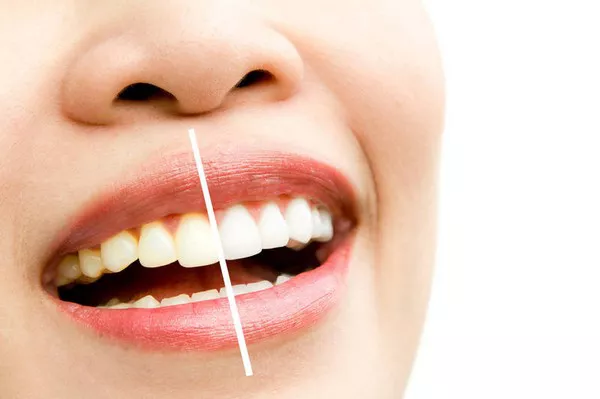The effects of smoking on health are widely known and documented, but its impact on oral health is often underestimated. One of the visible and unsightly consequences of smoking is the yellowing of teeth. Smoking not only stains teeth but also contributes to a range of dental problems. In this article, we will explore why smoking causes yellow teeth and the broader implications of tobacco use on oral health.
The Anatomy of Tooth Discoloration
To understand why smoking leads to yellow teeth, it’s crucial to delve into the anatomy of tooth discoloration:
Tooth Enamel: The outermost layer of a tooth is enamel, a hard and protective surface that is naturally white or off-white. Enamel is resistant to staining, but it can become discolored over time due to exposure to substances that can penetrate its surface.
Dentin: Beneath the enamel lies dentin, a yellowish tissue that forms the bulk of a tooth’s structure. Dentin is naturally yellow, and when the enamel becomes thinner or develops microscopic cracks, the underlying dentin color becomes more visible.
Tobacco Stains: Smoking introduces tar and nicotine into the mouth. Tar is a sticky substance that easily adheres to tooth enamel, while nicotine, when mixed with oxygen, turns yellow.
Why Smoking Causes Yellow Teeth
Smoking is a major contributor to the yellowing of teeth for several reasons:
Tar and Nicotine: Cigarette smoke contains tar, which is rich in compounds that readily adhere to tooth enamel. Nicotine, present in tobacco, combines with oxygen to form a yellowish stain. Together, these substances create a perfect storm for tooth discoloration.
Reduced Saliva Production: Smoking can lead to reduced saliva production in the mouth. Saliva plays a crucial role in rinsing away food particles and preventing the buildup of stains on teeth. Reduced saliva flow allows stains to accumulate more easily.
Heat and Toxins: Smoking involves inhaling hot gases and toxins, which can damage the enamel’s surface and make it more porous. This increased porosity makes it easier for stains to penetrate and become embedded in the enamel.
Inflammatory Response: Smoking is known to cause inflammation of the gums (gingivitis) and can progress to periodontal disease. Gum inflammation can expose more dentin, making the yellow color more prominent.
Long-Term Exposure: Over time, habitual smoking leads to sustained exposure of teeth to tar, nicotine, and heat. This chronic exposure intensifies the discoloration process, making it more difficult to reverse.
The Broader Implications on Oral Health
While yellow teeth are a visible consequence of smoking, the effects of tobacco use on oral health extend beyond discoloration:
Bad Breath: Smoking can lead to persistent bad breath, or halitosis, due to the accumulation of tobacco residue and the drying effect of smoke on oral tissues.
Gum Disease: Smoking is a significant risk factor for gum disease (periodontal disease). It reduces blood flow to the gums, weakens the immune system’s response to infection, and hinders the healing process.
Tooth Loss: Long-term smoking is associated with an increased risk of tooth loss. Gum disease and weakened enamel make teeth more susceptible to decay and damage.
Oral Cancer: Smoking is a leading cause of oral cancer, which can affect the lips, tongue, mouth, and throat. The risk of developing oral cancer is significantly higher among smokers.
Delayed Healing: Smokers often experience delayed healing after dental procedures such as extractions or implants. The chemicals in tobacco can impede the body’s ability to repair damaged tissues.
Prevention and Treatment
Preventing and addressing yellow teeth caused by smoking requires a multi-faceted approach:
Smoking Cessation: The most effective way to prevent further yellowing of teeth and improve oral health is to quit smoking. Consult with a healthcare professional or smoking cessation program for support.
Oral Hygiene: Maintain a rigorous oral hygiene routine, including brushing, flossing, and regular dental check-ups. Your dentist can provide professional cleanings and advice on teeth-whitening options.
Whitening Treatments: Teeth-whitening treatments, such as professional dental whitening or over-the-counter products, can help reduce stains and restore a whiter appearance to teeth.
Dietary Choices: Limit consumption of staining beverages like coffee, tea, and red wine. Rinsing your mouth with water after consuming such drinks can help reduce staining.
Regular Check-ups: Schedule regular dental check-ups to monitor and address oral health issues promptly. Your dentist can provide personalized recommendations based on your specific needs.
Conclusion
Yellow teeth caused by smoking are a visible manifestation of the harm that tobacco use inflicts on oral health. Smoking introduces staining compounds like tar and nicotine, reduces saliva flow, and damages enamel, resulting in persistent discoloration. Beyond the cosmetic concerns, smoking has far-reaching implications for oral health, including gum disease, tooth loss, and oral cancer. Preventing and addressing yellow teeth requires a commitment to smoking cessation, a robust oral hygiene routine, and professional dental care. By quitting smoking and seeking appropriate treatment, individuals can improve their oral health, enhance their smiles, and reduce the risk of more severe dental issues associated with tobacco use.
Related Topics:































